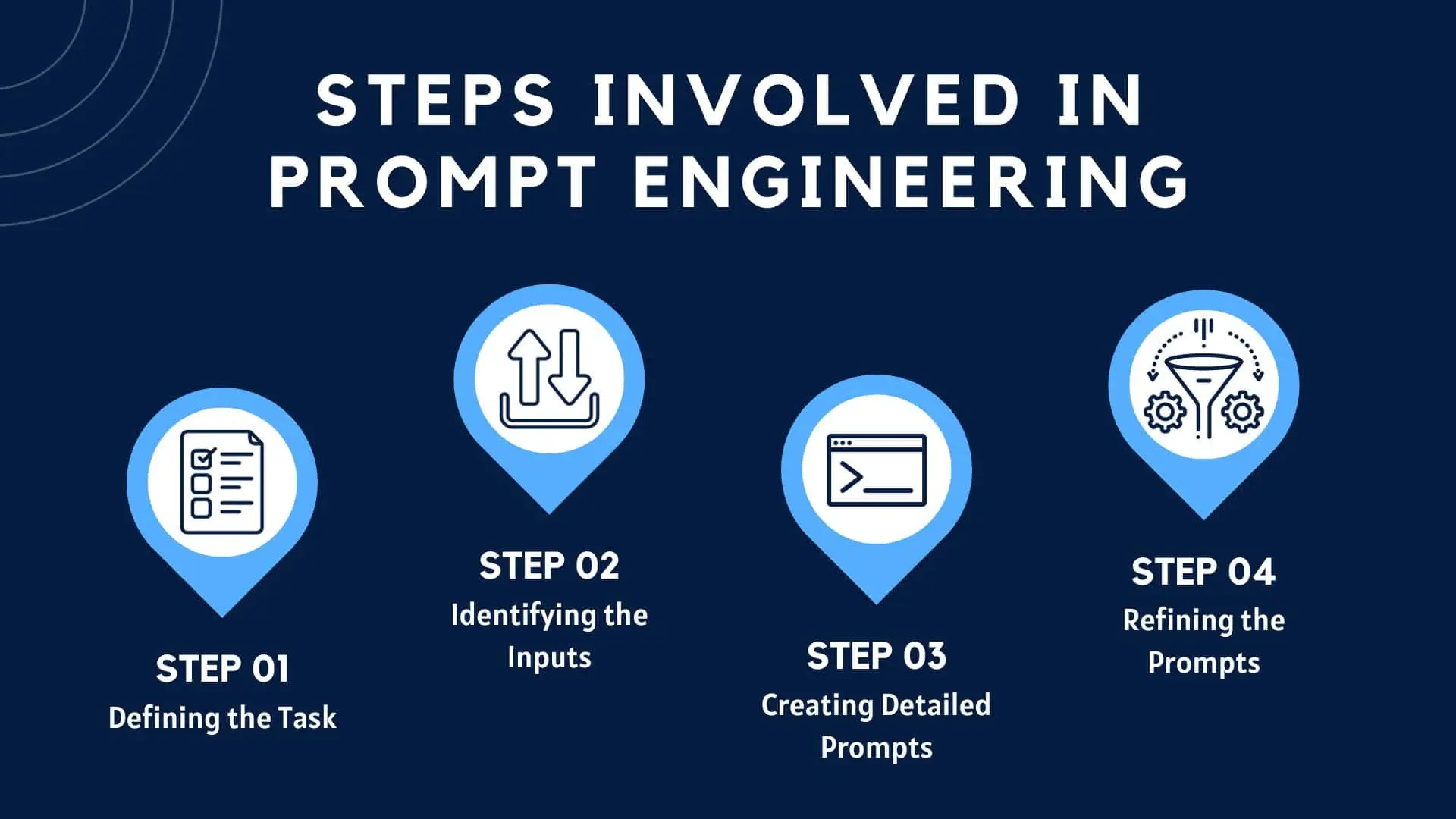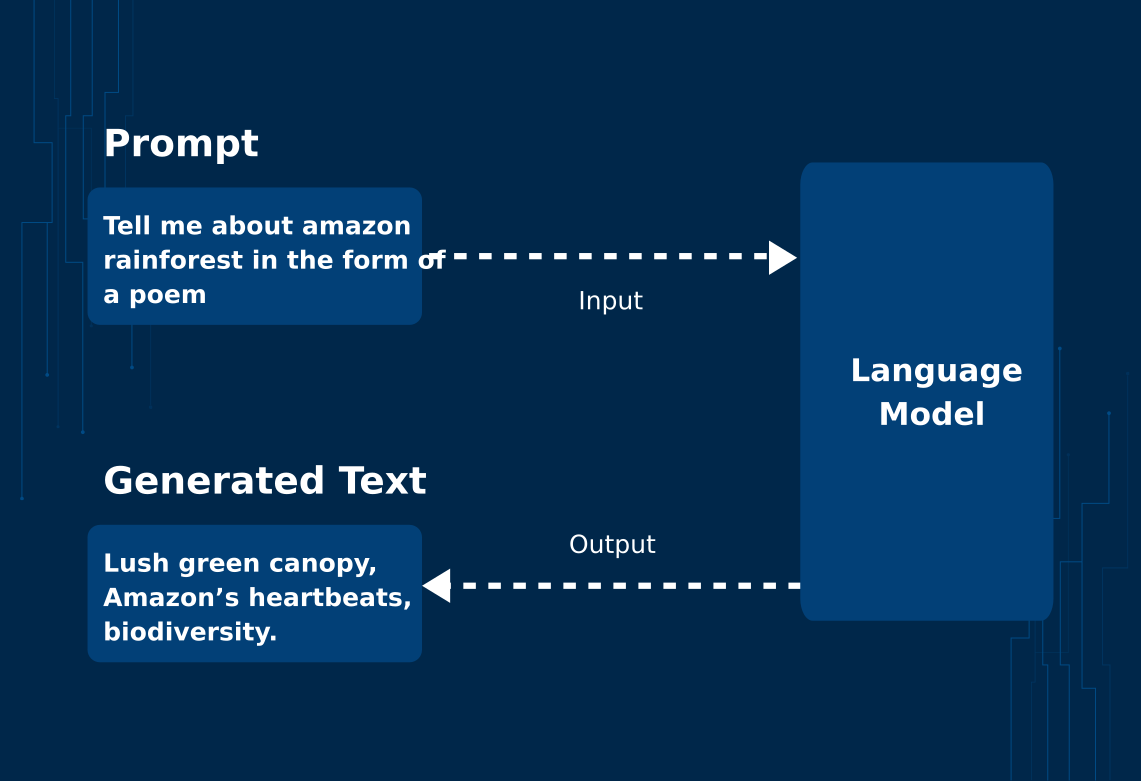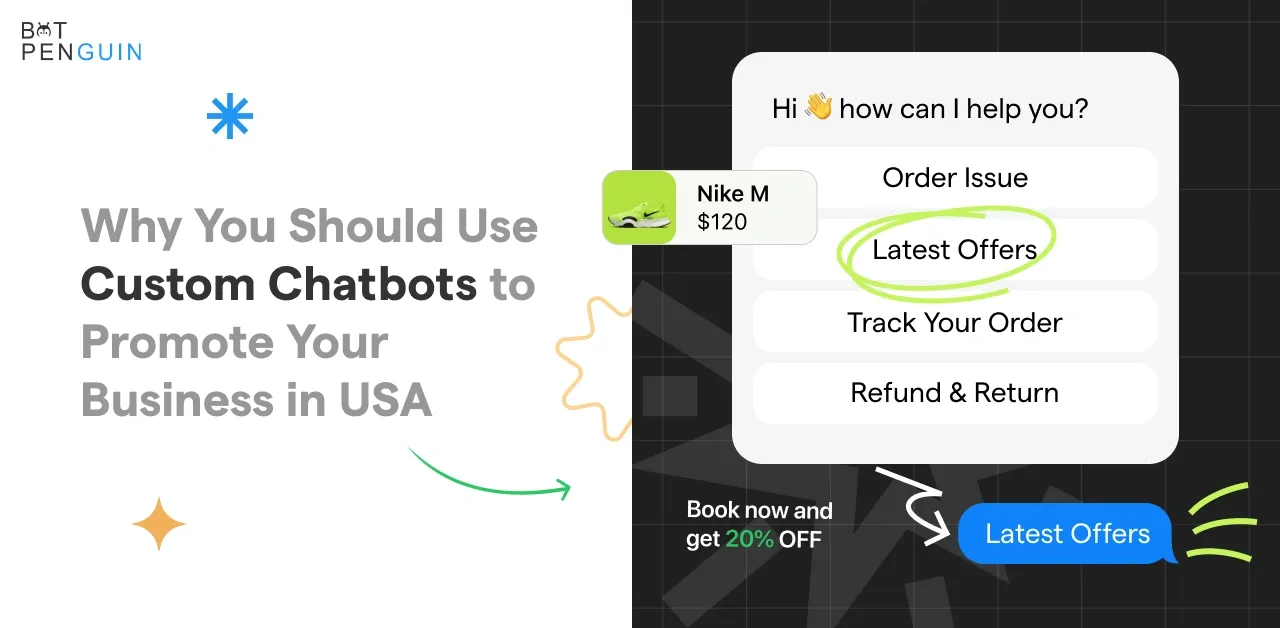In today's digital age, AI language models have become increasingly prevalent, powering various applications from content generation to virtual assistants.
Prompt engineering plays a vital role in harnessing the full potential of these models, allowing us to shape their outputs to meet our specific needs.
In this blog, we'll dive into the intricacies of prompt engineering ai, understand its importance, and uncover the key elements that influence AI model behavior.
What is Prompt Engineering?
Prompt engineering is a technique used to improve the performance of AI language models, like chatbots.
It involves designing well-formulated prompts or questions that make it easier for the AI model to understand the user's intent and provide better, more relevant responses.
Prompt engineering is important because AI language models are sensitive to the way a question is phrased or framed.
By using carefully designed prompts, these models are better equipped to meet users' needs. Typically, AI developers or human evaluators create these prompts to fine-tune the system, making it more effective and accurate over time.
In summary, prompt engineering helps language models comprehend what users want, in turn providing more accurate and helpful responses.
The Role of Prompt Engineering
While AI language models are powerful, they require proper guidance to generate desired outputs consistently. This is where prompt engineering comes into play.
Prompt engineering involves crafting effective instructions or queries to elicit specific responses from AI language models.
By carefully designing prompts and providing relevant context, we can influence the behavior of these models, ensuring they generate accurate, informative, and engaging content.
Key Components of Prompt Engineering
Prompt engineering ai comprises several essential components that contribute to its success. Let's explore each of these components in detail.
Prompts: Guiding the AI Models
Prompts serve as the initial input or query provided to AI language models. They can take various forms, such as questions, incomplete sentences, or specific instructions.
The prompts set the stage for the models, providing them with a starting point for generating responses.
Instructions: Crafting Clear Guidance
Crafting effective instructions is crucial in prompt engineering ai. Instructions define the desired outcome or behavior we want from the AI models.
Clear and concise instructions help the models understand our expectations and generate more accurate responses.
Context: Adding Depth and Specificity
Context is the additional information or details we provide alongside the prompts. It helps the AI models understand the context in which they should generate responses.
By incorporating context, we can obtain more relevant and contextually appropriate outputs.
How does Prompt Engineering Influence AI Models?
Prompt engineering With AI has a profound impact on the behavior of AI language models. It enables us to shape the outputs generated by these models to align with our objectives.
By carefully constructing prompts, providing precise instructions, and incorporating context, we can influence the AI-generated text's style, tone, and content.
This level of control allows us to create customized and high-quality outputs that cater to our specific requirements

Why is Prompt Engineering AI important?
Prompt engineering plays a crucial role in maximizing the potential of AI language models, allowing users to craft instructions or queries that yield desired outcomes.
By understanding the importance of prompt engineering, you can enhance your content generation process, improve the quality and relevance of AI-generated outputs, and even mitigate biases and ethical considerations. Let's explore these aspects further.
Enhancing content generation with desired outcomes
When you engage in prompt engineering AI, you have the power to shape the responses generated by AI language models.
By carefully crafting prompts, you can guide the model to produce content that aligns with your objectives.
Whether you're looking to generate engaging articles, compelling marketing copy, or informative blog posts, prompt engineering helps you achieve the desired outcomes and meet your content goals.
Improving the quality and relevance of AI-generated outputs
AI language models are compelling but may only sometimes provide outputs that precisely match your requirements.
Through prompt engineering ai, you can fine-tune the instructions given to the model, leading to more accurate, relevant outputs tailored to your needs.
You can refine the generated content by leveraging prompt engineering techniques, ensuring it aligns with your brand voice, style guidelines, and target audience preferences.
Mitigating biases and ethical considerations through careful prompt engineering ai
One of the key concerns with AI language models is the potential for bias in their outputs. Prompt engineering offers an opportunity to address this issue by carefully considering the prompts and potential biases they may introduce.
You can minimize biased or problematic responses by paying attention to the phrasing, context, and instructions provided to the model.
This responsible approach to prompt engineering ai ensures that the AI-generated content remains fair, inclusive, and aligned with ethical considerations.

When to Utilize Prompt Engineering?
Prompt engineering ai can be beneficial in various scenarios across industries and applications.
Identifying these scenarios allows you to harness the power of AI language models effectively while leveraging prompt engineering techniques.
Let's explore some everyday use cases where prompt engineering proves valuable:
Content creation and copywriting
For writers and content creators, prompt engineering ai can be a game-changer.
By providing clear and specific instructions to the AI language model, you can generate creative ideas, outline articles, or even receive assistance in drafting captivating introductions or conclusions.
Prompt engineering ai empowers you to collaborate with the model, leveraging its capabilities while maintaining your unique voice and style.
Virtual assistants and chatbots
Prompt engineering ai is vital in developing virtual assistants and chatbots that provide seamless and engaging interactions.
By carefully crafting prompts, you can train these AI systems to respond to user queries, offer helpful information, or even handle customer support inquiries.
Prompt engineering enables you to fine-tune the model's responses, ensuring it delivers accurate and personalized assistance.
Data analysis and research
Researchers and analysts can benefit from prompt engineering ai to streamline their data analysis processes.
By constructing precise prompts, you can instruct the AI model to generate insights, summarize research findings, or assist in data exploration.
Prompt engineering ai enables you to leverage the model's analytical capabilities and augment your research endeavors effectively.
Suggested Reading:
Which AI Language Models Support Prompt Engineering?
Prompt engineering ai is a powerful technique that can be applied to various AI language models, enabling users to shape the output according to their desired goals. Let's look at some popular models that facilitate prompt engineering.
Overview of popular AI language models that facilitate prompt engineering ai
GPT-3: OpenAI's GPT-3 (Generative Pre-trained Transformer 3) is widely known for its language generation capabilities. It allows users to provide prompts or instructions to generate coherent and contextually relevant text. GPT-3 supports a flexible, prompt format where instructions can be given in plain English
GPT-4: Building upon the success of its predecessor, GPT-4 is expected to enhance prompt engineering capabilities further. While specific details about GPT-4 are not yet available when writing this blog, it's anticipated to offer more advanced features and improved performance.
Other models and frameworks: Apart from GPT-3 and GPT-4, several other AI language models and frameworks support prompt engineering ai. Some notable examples include Microsoft's Turing-NLG, Hugging Face's Transformers library, and Google's T5 (Text-to-Text Transfer Transformer). These models offer varying degrees of prompt engineering flexibility and may have specific requirements or formats for input prompts.
Understanding the specific prompt formats and capabilities of each model
Each AI language model has its prompt format and capabilities, which users should consider when applying prompt engineering techniques.
While GPT-3 allows instructions to be provided in plain English, other models may require prompts in a specific format, such as providing a context or a prefix to guide the generation process.
It's important to explore the documentation and guidelines the model developers provide to understand the best practices for prompt engineering. These resources can provide insights into the optimal prompt format, techniques for achieving desired results, and potential limitations or constraints of the models.
Remember, prompt engineering is an evolving field, and staying updated with the latest advancements and improvements in AI language models will enable users to leverage the full potential of prompt engineering techniques.
Where to Apply Prompt Engineering?
Prompt engineering can be applied across various platforms and tools, depending on individual needs and preferences. Let's explore some options that support prompt engineering.
Learn how prompt engineering, a rising star in AI technology, is poised to revolutionize various areas of our daily lives.
Educational Technology
Prompt engineering is making strides in EdTech. It can help design more interactive, personalized learning experiences, like AI-driven tutoring systems that adapt to individual learning styles.
Customer Service
AI-driven customer service can be greatly enhanced using prompt engineering, paving the way for intelligent virtual assistants that comprehend and address customer needs more effectively.
Social Media Management
It can aid in crafting accurate responses in social media bots, resulting in more engaging and efficient user interactions.
Healthcare
In healthcare, properly engineered prompts can help AI tools provide more accurate information to patients, assist in diagnosis, and improve patient-doctor communication.
Marketing and Sales
Prompt engineering can reinvent how AI is employed in marketing campaign strategy formulation, making chatbots more persuasive and efficient in engaging potential customers.
Indeed, it's exciting to see how prompt engineering will further shape our future interactions with AI.
Does Prompt Engineering Require Coding?
Interested in prompt engineering but worried about the technical requirements? Let's clear the air about its relationship with coding.
The Role of Coding
While prompt engineering has ties with coding, not all aspects of it require in-depth programming. The essence lies in crafting queries that result in more useful AI responses.
Model Design and Training
Model design and training, part of the system behind prompt engineering, do necessitate a coding background – tasks related to algorithm adjustment and data set handling.
Writing Prompts
Writing-themed, controlled prompts typically do not require coding. It's more about understanding the system's pattern recognition and tailoring prompts accordingly.
Using Pre-Trained Models
With pre-trained models like GPT-3, prompt engineering could involve minimal to no coding. It makes AI functionalities accessible to a wider audience.
Merging Fields
Prompt engineering resides at the intersection of technology and linguistics, offering coding-savvy individuals and non-coders alike a chance to contribute.
The emphasis is on the ability to communicate effectively with AI, not necessarily on coding prowess.
How to Perform Prompt Engineering?
Now that we understand the options available for non-coders and the advantages of coding skills let's dive into the step-by-step process of performing prompt engineering.

Develop a Strong Foundation
It's crucial to comprehend your AI model's capabilities and limitations. Familiarize yourself with its strengths, grasp how it processes language, and understand the underlying technology.
This foundation allows you to navigate the subtle nuances of crafting more efficient prompts.
Define Your Objective
Figure out the task or problem you want your AI model to address. Establishing clear objectives guides your prompt engineering process, ensuring your prompts are tailored to the specific outcome you desire.
Be it generating text, translating languages, or answering general queries, your objective sets the stage.
Create Your Initial Prompts
With your objective in mind, begin formulating prompts that are concise, specific, and unambiguous.
Focus on the purpose you want to achieve, and use instructive language to shape the AI model's response.
Remember, asking direct questions, providing examples, or imposing constraints on responses can yield better results.
Iterate and Refine
Performing prompt engineering is an iterative process. Test your initial prompts and analyze the AI model's responses.
Was the output relevant and practical?
Did it blow past your expectations, or did it need more work?
Use this feedback to refine and recalibrate your prompts, streamline their language, and clarify or tweak the guiding instructions.
This continuous cycle of testing, refining, and retesting helps improve the overall efficiency of your prompts.
Assess and Compare
After several iterations, you'll likely have multiple versions of prompts that produce different kinds of results.
Assess the effectiveness of each prompt and evaluate which ones yield the most satisfactory outputs. Analyze their differences to understand why certain prompts work better than others.
Learning from these comparisons is invaluable in honing your prompt engineering skills and developing an understanding of what resonates best with your AI model.
Best Practices for Prompt Engineering
To make the most out of prompt engineering, here are some best practices to keep in mind:
Experimenting with Different Prompt Variations
Don't be afraid to experiment! Try various prompt variations to see what works best for your use case.
Explore different phrasings, structures, and approaches to elicit the desired responses from the AI model.
Utilizing Prompt Engineering Communities and Resources
Engage with prompt engineering communities and take advantage of available resources. Join online forums, participate in discussions, and learn from the experiences of others.
Sharing insights and tips can greatly enhance your prompt engineering skills.
Staying Up to Date with AI Model Updates and Advancements
AI language models are continually evolving. Stay informed about updates, advancements, and improvements in the models you're working with.
Keeping current ensures you leverage the latest features and techniques to enhance your prompt engineering efforts.
Conclusion
Prompt engineering is a fascinating field that offers both coders and non-coders alike opportunities. While coding skills can be advantageous, they are optional for prompt engineering. User-friendly interfaces, GUI-based tools, and pre-built templates empower non-coders to excel in this domain.
Following this article's step-by-step guide and best practices, you can craft effective prompts, leverage AI language models, and achieve remarkable results.
So, whether you're a coder or a non-coder, we encourage you to explore and experiment with prompt engineering. The possibilities are endless!
Prompt engineering is reshaping how we interact with AI language models, and its future holds even more exciting possibilities.
Frequently Asked Questions (FAQs)
Why is prompt engineering necessary?
Prompt engineering is crucial because it allows users to influence and control the responses generated by AI language models.
Users can achieve more accurate, specific, and relevant outputs tailored to their needs by refining prompts.
What role does prompt engineering play in AI applications?
Prompt engineering is vital in various AI applications, including content generation, chatbots, virtual assistants, and data analysis.
It enables users to harness the potential of AI models to generate high-quality, contextually appropriate responses.
Do I need coding skills for prompt engineering?
Coding skills are only sometimes necessary for prompt engineering. While coding can provide additional flexibility and customization, user-friendly tools and pre-built prompt templates are available that simplify the process for non-coders.
How can I effectively craft prompts?
To craft effective prompts, it's important to analyze the desired output, understand the AI model's behavior and limitations, construct clear and specific instructions, and incorporate relevant context and conditioning.
Iterating and refining prompts based on the model's responses can produce optimal results.
Can prompt engineering help to improve AI model performance?
Yes, prompt engineering can significantly enhance AI model performance.
By fine-tuning prompts, users can mitigate biases, increase response accuracy, and tailor the generated content to meet their specific requirements.
Are there any resources available for prompt engineering?
Yes, there are resources available for prompt engineering.
Prompt repositories, online forums, and prompt engineering communities offer pre-built prompt examples, best practices, and collaborative insights to help users enhance their prompt engineering skills.
What are the limitations of prompt engineering?
While prompt engineering empowers users to shape AI model responses, it does have limitations.
The model's underlying biases, constraints of the language model, and the need for continuous refinement can pose challenges in achieving the desired outcomes.



